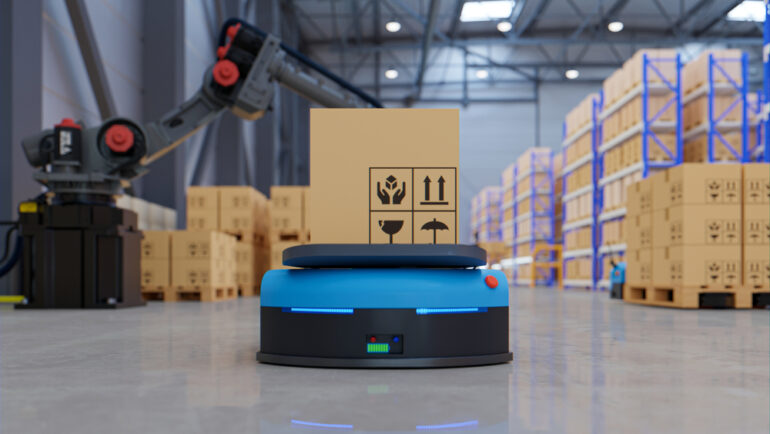Warehouses are becoming more and more automated, with new technologies changing the way we do business. Automation has been proven time and again to increase efficiency, decrease costs, and improve safety for workers on the job.
In this post, we’ll take a look at three advanced warehouse automation technologies that have changed commerce.
Automated storage and retrieval systems (AS/RS)
These are machines that automatically store and retrieve pallets in warehouses. AS/RS systems usually consist of a moving conveyor belt with storage shelves on each side, allowing rapid movement throughout the warehouse to pick up goods or put them away.
These systems often utilize the same technology that we’ve seen in self-driving cars: lasers and sensors. A laser scans a barcode, which tells the system where to place or retrieve an item from storage.
Sensors monitor stock levels to know when more items are needed, eliminating human error related to tracking inventory manually. These systems can move up to 30 million pounds on some warehouses every day.
Many companies are now investing in AS/RS systems to improve productivity and reduce the cost of shipping. Some warehouse operators have found that conversion from a manual system to an automated can pay for itself within 12 months.
This is because of the higher speeds, less damage during transport, lower labor costs related to handling goods manually with humans instead of machines, and more efficient use of warehouse space.
Automated guided vehicle system (AGV)
These are self-driving vehicles that follow a wire embedded in the floor or ceiling of a warehouse. AGVs transport goods from storage to picking areas, eliminating the need for workers to walk around large warehouses carrying heavy items.
These benefits can improve workplace safety and morale while increasing productivity by speeding up fulfillment time. Some even can work together with other AGVs as they pick up different products on their route, so there’s less congestion at receiving docks than when using humans alone.
AGVs can work around the clock, even when humans aren’t working, essential in 24-hour operations. They can also be scheduled to start picking up goods before the workday starts, speeding up order fulfillment time for companies primarily focused on reducing their response times to customers.
These systems are also relatively cheap compared with other warehouse automation technologies, making them an appealing option for many businesses looking to put more money back into their bottom line without sacrificing productivity or efficiency in warehouses.
Automatic identification system (AIS)
This technology uses radio frequency identification tags attached directly onto products to track where everything is at all times in a warehouse and ensure nothing gets lost in transit.
These tags send out signals emitting information about location, destination, condition, temperature, etc., allowing workers to use handheld scanners to quickly get information that is updated in real time.
These systems are handy for high-value items like pharmaceuticals or electronics, which must be kept at specific temperatures and locations, so they don’t become damaged or lose their potency before being shipped out.
They also allow companies with multiple warehouses to keep track of where all inventory is located across different facilities without having employees manually write down tracking numbers on each piece of a product when it gets sent from one place to another.
AIS has many applications beyond just warehouse management, including use in retail stores, hospitals, schools, libraries, airports, etc., giving companies the ability to streamline operations in every area where goods are handled.
Conclusion
Warehousing automation technologies are already in place worldwide and will continue to change how we move goods globally.
These technologies provide many benefits that can increase workplace safety and morale while reducing costs for companies, making them an attractive option to consider.
They have allowed businesses to manage their supply chains better, making it easier to increase productivity and reduce the costs of shipping goods. Technology experts predict automation in warehouses will continue growing as the cost of these systems decreases while their capabilities expand.
With so many benefits to this approach, it’s no wonder more, and more businesses are embracing warehouse automation every day.
If you have a warehouse and want to increase your productivity. Don’t go it alone- hire professional NetSuite consulting help today to learn how to get the most from your warehouse through the above automation technologies.







